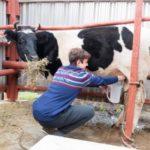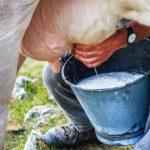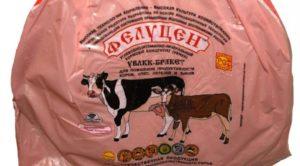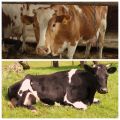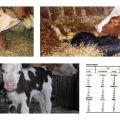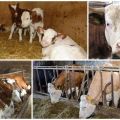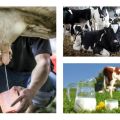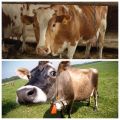Reasons and what to do if a cow kicks during milking, how to confuse her
Our own fresh milk is an environmentally friendly, healthy product. But sometimes a situation arises when the cow does not allow herself to be milked. Some farmers do not know what to do if a beloved cow kicks during milking. It is necessary to "persuade" the obstinate animal. Otherwise, the cow will have to be slaughtered, which is especially undesirable if she is young.
Basic rules for milking
The reasons for the kicking of a cow may lie in improper milking. Therefore, all milking rules must be strictly followed. The main positions are as follows:
- Milking should take place on schedule and at a specific time. Usually milked 2-3 times a day. If the cow has just calved, then the procedure is repeated up to 6 times a day. This will help increase milk yield. After a month, you can switch to a 4-time schedule, and after another 30 days - to a regular one.
- Wash your hands thoroughly before starting the procedure. Wear gloves. Personal hygiene should be observed so that unpleasant odors do not come from the milker. If several cows are to be milked, wash your hands after each cow.
- Massage the udder 30 seconds before starting. Clean it from dirt and wipe dry. Check the udder for injuries, scratches. If they are, then you need to start treatment.
- Young cows are milked first, then old ones. Milk from sick animals is taken last. At the beginning of milking, 2-3 streams are decanted from each teat into a clean container. This reduces the likelihood of disease in an animal by 7-18%.
First heifers need to be prepared before they calve. From the fifth month of pregnancy, you need to start touching her udder, belly during feeding. The heifer will eat and will not pay attention to stroking. Thus, getting used to the procedure is achieved.
After milking, the teats should be disinfected. The table shows the most common disinfectants.

Reasons for kicking
There may be several reasons why a cow kicks and prevents milk from being milked. Eliminating them is easy. The main factors are as follows:
- If the livestock has recently been purchased, the new habitat can be very stressful. Therefore, the cow may kick and not be milked.
- Udder diseases such as mastitis. Also, if the animal has injuries and abrasions on the nipples, then they cause pain. Therefore, it is important to inspect the udder before milking.
- If milking occurs “out of time”, not according to the schedule, then this can cause irritability of the animal.
- Bright light, loud sounds, strong odors, the presence of strangers - all this can provoke aggression in the cow.
- If milking is inept, it hurts the cattle and may kick.

In addition to these factors, cow fatigue can be the cause of aggression.Milking is also a tedious process for her, so the additional load can lead to kicking.
How to solve a problem
People have been engaged in cattle breeding since time immemorial. Therefore, a lot of popular advice has accumulated that you can use. You also need to listen to the opinion of veterinarians.
Veterinarian advice
First of all, veterinarians recommend checking the udder. If it has hematomas, hidden mastitis, internal injuries, then the cow will experience pain during milking. There may be small cracks, insect bites, invisible hematomas.
Therefore, you first need to carefully examine the udder and cure it if necessary.
Veterinarians recommend a variety of sedatives. For example, decoctions of oregano or valerian. Pour 30 grams of herb with 500 milliliters of boiling water. Then wait 20-40 minutes. Mix the finished broth with 10 liters of water and water the animals. With prolonged use, the milk may taste bitter.
Corvalol creates another soothing mixture. To do this, for every 50 kg of the cow's weight, 1 milliliter of the product is added to the drinking water. A similar mixture is used for cramps and twitching in the muscles, with spasms of the gastrointestinal tract.
You can simply confuse your legs - one of the common ways. To do this, they make a knot in the form of an eight and put it on the legs. Then the knot is tightened. A cow that is constrained in this way cannot kick. Another option is to tie the front leg in an upright position to a support.
Traditional methods
The cow becomes irritated in bright light and can hurt the milker with its hoof. Therefore, you need to reduce the lighting in the barn or throw a blanket or blanket over her head. If the room is hot, then put a wet cloth on the back of the cow. This will cool the animal and keep insects away from it.
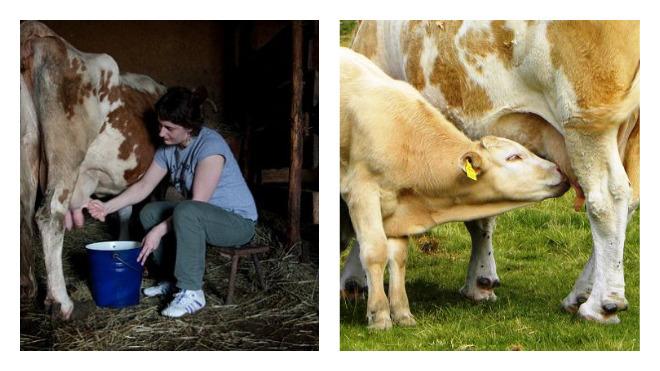
Many farmers tie their tail to their feet. If the cow loves some kind of food or is hungry, then with the help of an assistant, you can try to milk it. One person feeds the cattle, and the second milks it at the same time. If all the described methods do not work, then you can use special devices called anti-break.
Do-it-yourself anti-break
The action of the device is based on the forced raising of the back or front leg of the cow. For this, one end of the anti-break clings to the fold on the thigh, and the other to the back. By adjusting the degree of tension, it will be possible to immobilize the animal.
The following elements are used in the manufacture of the anti-break:
- 2 identical pipes of small diameter, for example 25 millimeters with curved ends and holes along the length, "A";
- large diameter pipe, for example 32 mm, concave in the middle, "B";
- rubber lugs for smaller pipes, "C".
- corner springs for fixing, "D".

The device is assembled according to the following algorithm:
- Springs are inserted into the holes of pipes with a smaller diameter.
- Small pipes are inserted into each end of a wide pipe and fixed with a spring.
- Cushioning tips are put on the ends of small pipes.
The final design is as shown in the figure below. There is also a schematic drawing of the anti-break installation method.
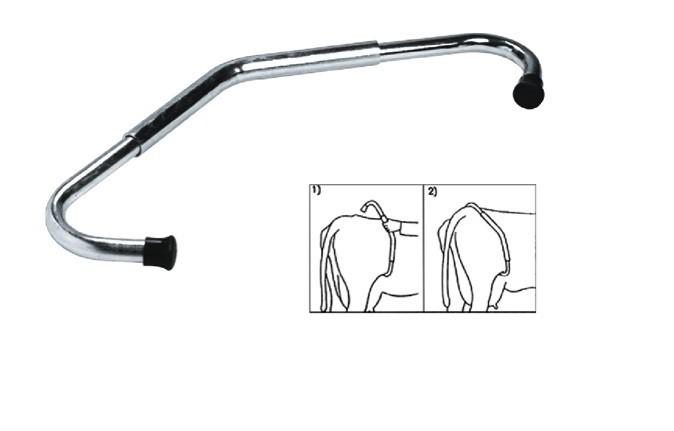
If a cow kicks, there are many effective ways to tame her. The main thing is to determine as accurately as possible the cause of the animal's anxiety and apply the correct method of sedation.

